I hope no fists are flying at your office over budgeting and forecasting, however conflict is likely to occur. In this case, opinions and facts from different stakeholders can help. At the same time, impactful decisions at organizations that can affect the direction over days, months and years are derived from the better outcomes. The unnecessary part of conflict can be minimized with an integrated process letting the data drive these outcomes. Read more
The last several years have represented an interesting journey for organizations and teams leveraging Cognos for analytics. During that time, visual data discovery tools have made a significant impact. However, as of late, we have seen the pendulum swing back to concepts introduced by enterprise BI tools long ago.¹ What’s old is new again.
When these new tools arrived, they challenged both the status quo and what many of us saw as an ideal solution to the localized, ungoverned, manually-intensive, and often error-prone data manipulation (i.e. “shadow analytics”) processes of the past. If we think back to the dawn of the modern business intelligence age in the mid 1990’s, we realize that these challenges are what tools like Cognos were developed to solve. Read more
This is part five in our five part series on the essential capabilities of the competitive data-driven enterprise.
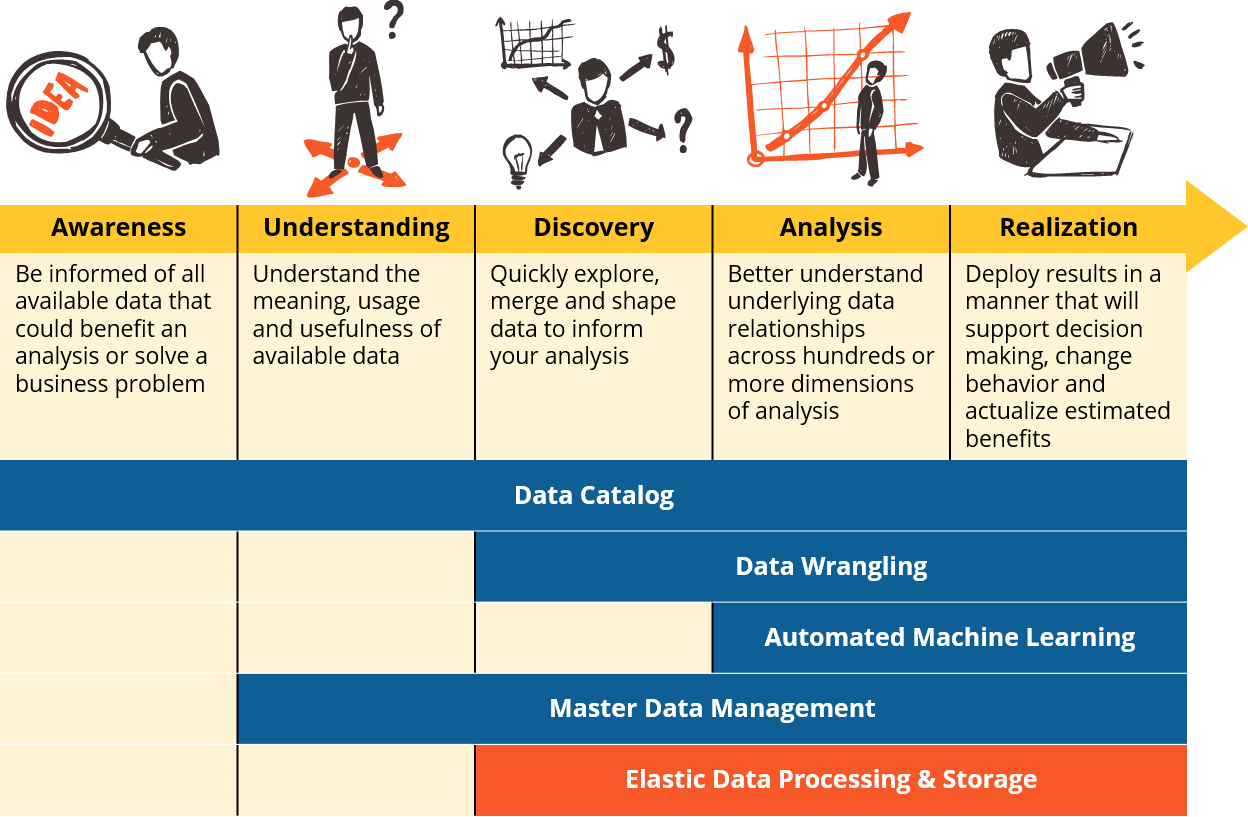
Over the last 20 years of doing business we have seen a number of different analytical data storage and query concepts fall in and out of favor. Throughout this time, a wave of digital transformation in business has dramatically increased the volume of collected data. Machine learning and other probabilistic methods benefit greatly from the law of large numbers so if by now it wasn’t already clear, all that talk about “big data” has really been about the analytics that it enables. As a result, today’s knowledge workers are predisposed to data hoarding, preferring to save everything including the data for which there are no known use cases, since its future value to the organization may still yet be discovered. Read more
This is part four in our five part series on the essential capabilities of the competitive data-driven enterprise.
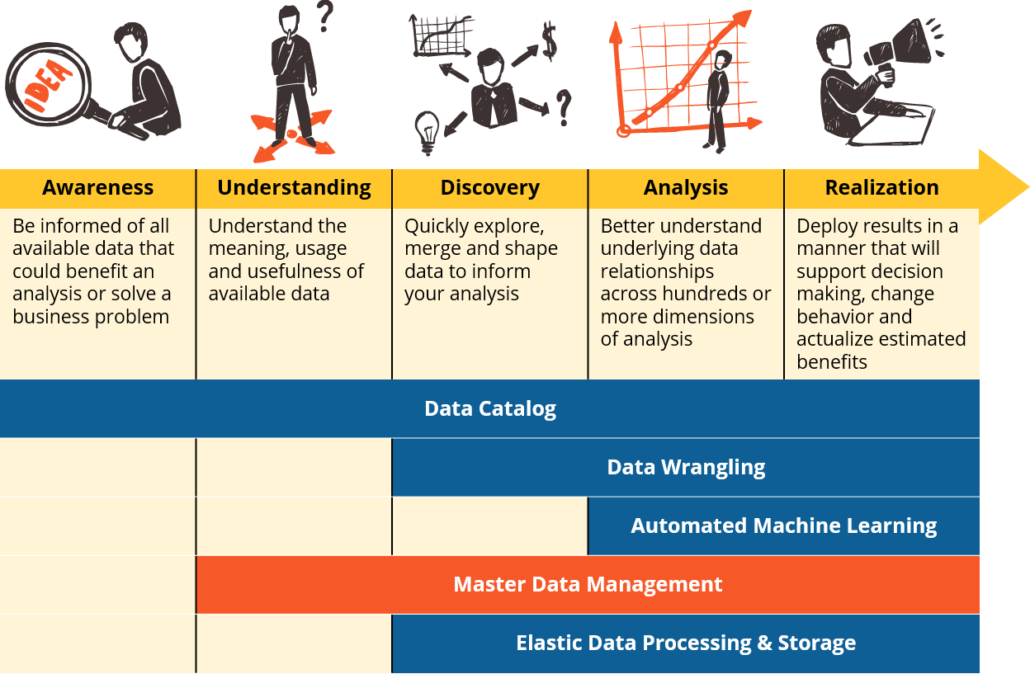
Businesses have been deploying enterprise data governance (defining what the data should be) and master data management (ensuring the data is as defined) programs for decades. Even if your company doesn’t have a formal master data management program by name, chances are good that they are doing some form of master data management in your data warehouse, CRM or ERP systems. As the trend towards decentralized data analysis continues to progress we see a few forces in play that make the case for incorporating a master data management capability into your organizational roadmap: Read more
This is part three in our five part series on the essential capabilities of the competitive data-driven enterprise.
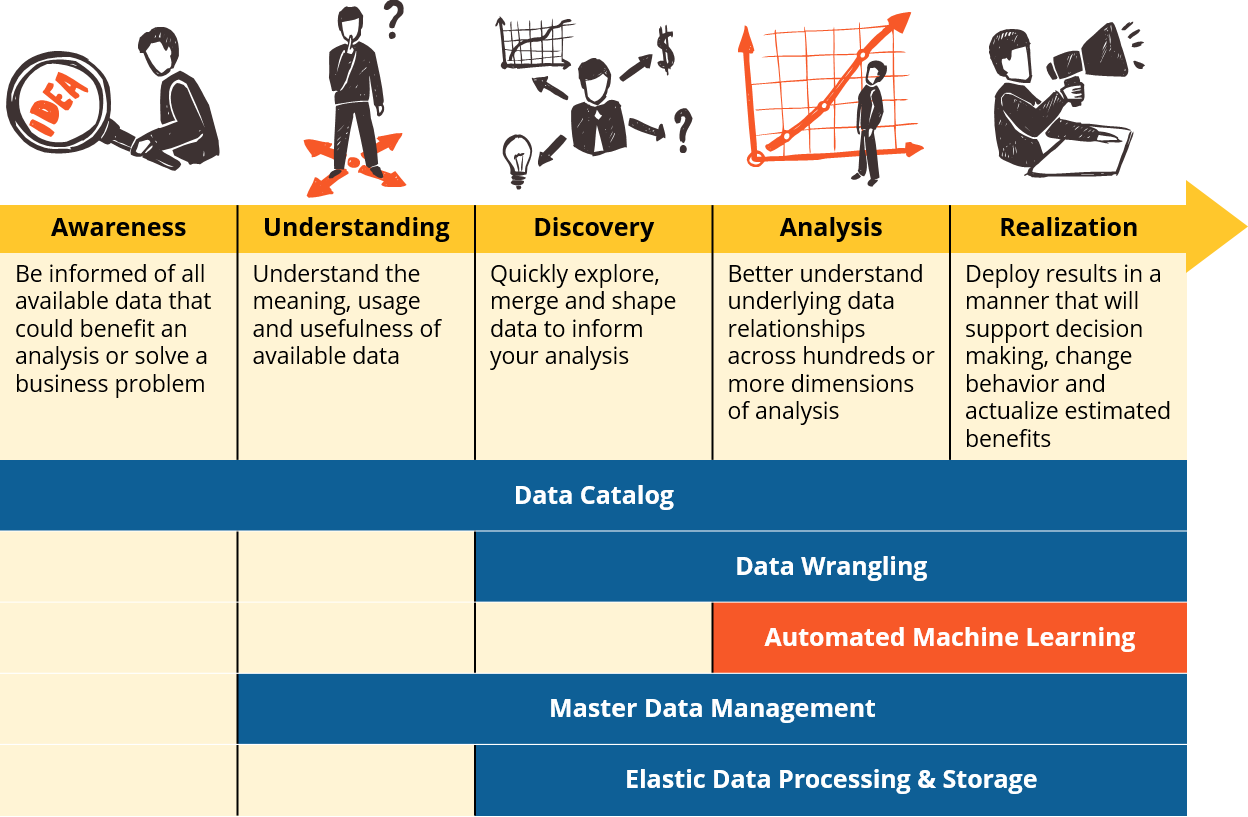
Most business analysts will reach for their favorite data visualization tool when it comes time to perform driver and correlation analysis when in search of a cause. While this technology is essential for communicating with data, and excellent at identifying new opportunities (i.e. visualizing gaps or data non-relationships), it is limited in its ability to produce reliable, accurate and conclusive results. This is mostly due to our own human limitations when visually processing more than two dimensions of analysis at a time (e.g. revenue over time by product line). Read more
This is part two in our five part series on the essential capabilities of the competitive data-driven enterprise.
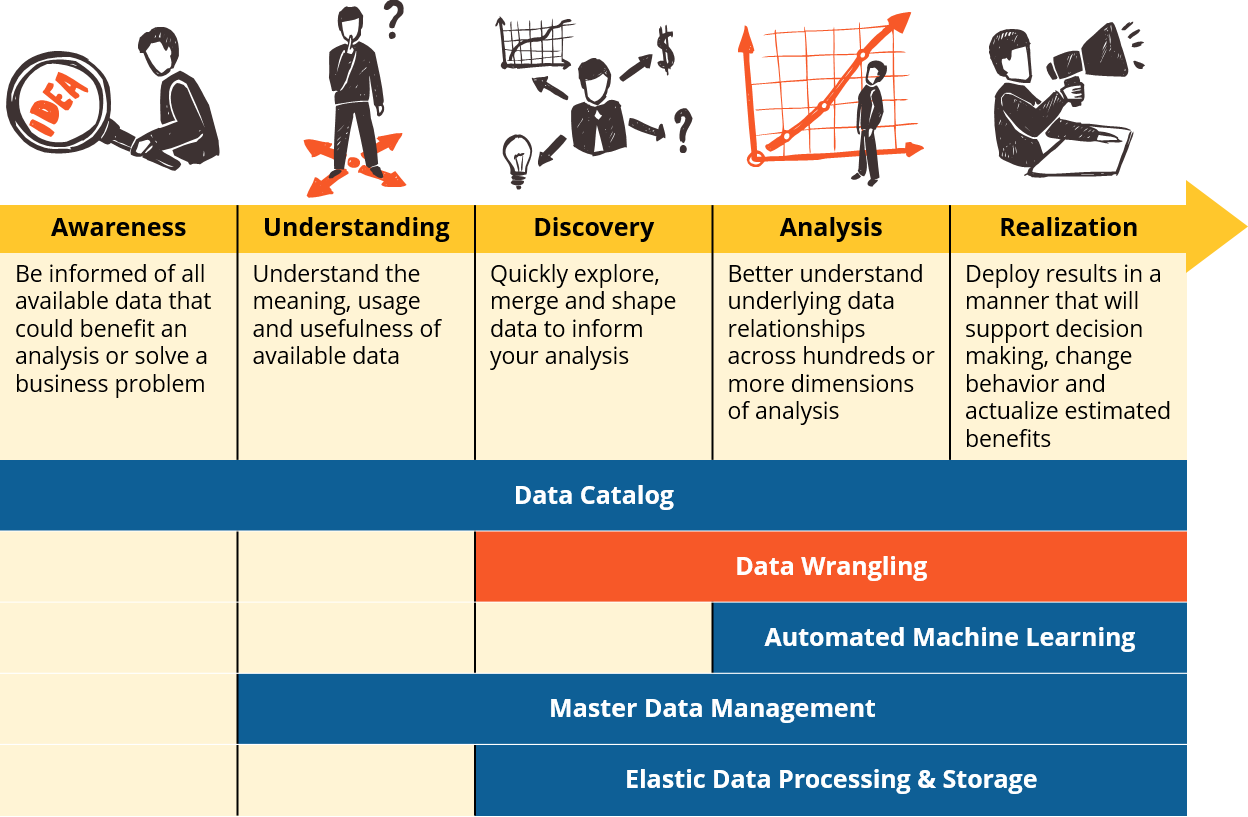
For decades, data integration and modeling have been done in either of two likely places: The enterprise ETL or Data Warehouse environment (IT Developers) or Excel (Analysts). Currently the status quo is being challenged in some of the following ways that highlight the importance of empowering domain and subject matter experts to wrangle and model their own data. Read more
This is part one in our five part series on the essential capabilities of the competitive data-driven enterprise.
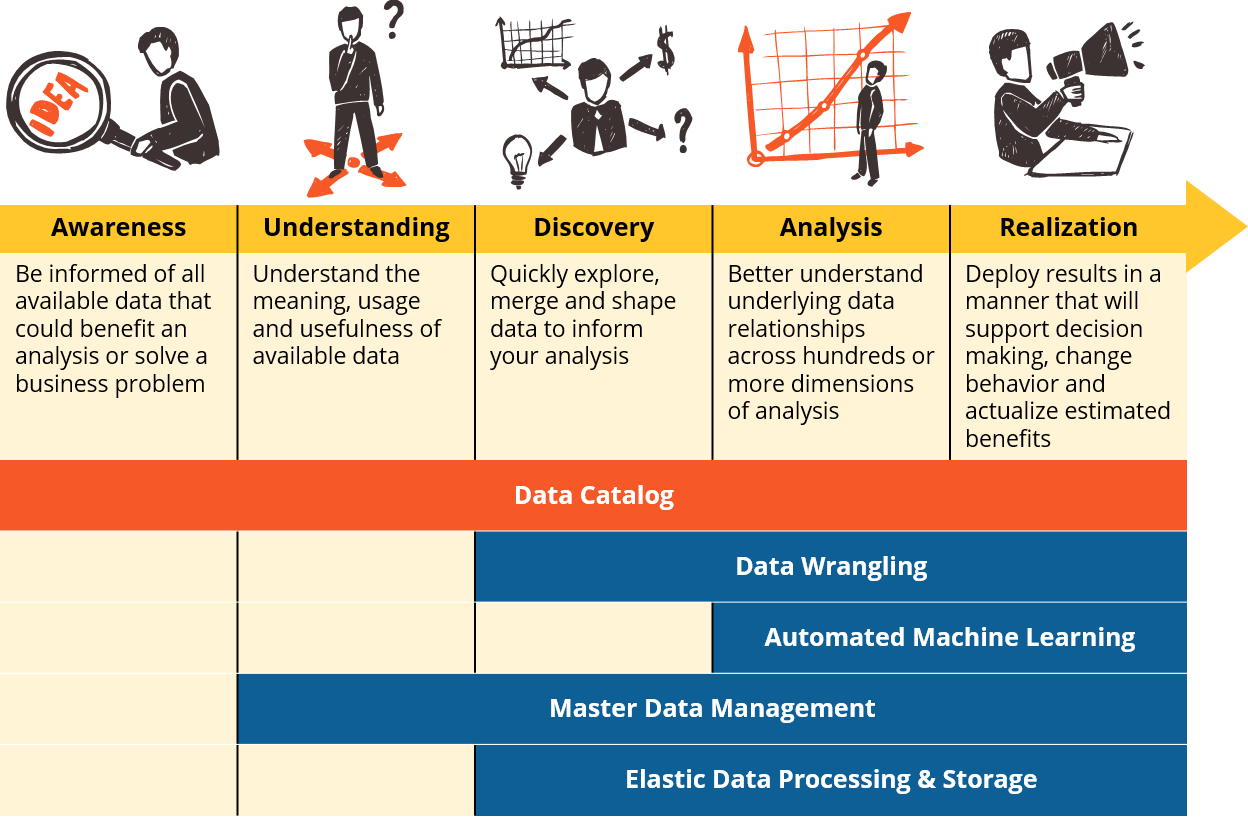
The most common form of data-enabled business problem solving begins with a hypothesis around business drivers and relationships within the data. Typically, a well tenured business analyst will pull together the data they know about or have access to in their department and proceed to build their analysis. This standard approach assumes that: Read more

